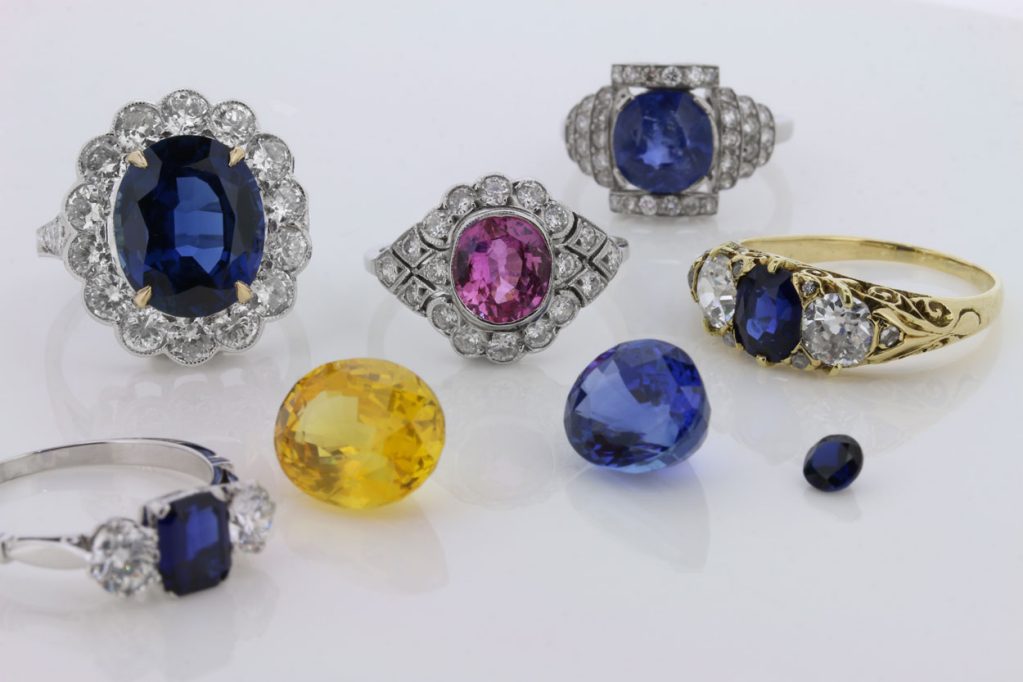
If you’re thinking of buying sapphire jewellery, it’s important to at least know the basics of what you’re shopping for. While there’s tons of information available online about buying diamonds, there’s far less information about buying sapphires. And that’s exactly why we’ve developed this crash course in buying sapphire jewellery.
Sapphires, along with rubies and emeralds, are one of the three most popular coloured gemstones in the world. And with good reason. Sapphires are not only beautiful, but they’re the second hardest substance on earth after diamonds. This makes them well-suited for everyday wear and an excellent choice for wedding and engagement rings.
Read on to discover the most important factors to consider when buying sapphire jewellery…
Natural and untreated vs. treated sapphires… and synthetic sapphires
Sapphires can be grown in a laboratory or treated with heat or chemicals in order to improve their colour and clarity. In fact, gem quality natural sapphires are rarer than diamonds! Most mined sapphires are of such poor quality that they never even enter the gem trade. Only a fraction of the sapphires that do enter the gem trade remain untreated. It’s estimated that approximately 95% of sapphires on the market have been treated in some way.
Around the turn of the twentieth century, scientists developed a flame fusion process for creating synthetic sapphires (and rubies). These synthetic sapphires became highly fashionable due to their price and accessibility, and even today many gemstones on the market are synthetic.
Natural sapphires, those which have been mined from the ground, remain the most valuable and desirable. However, not all ‘natural’ sapphires are what they seem. The appearance of many natural sapphires that are available today has been improved by artificial means. Glass is often used to fill inclusions and colouring agents may be diffused throughout a stone in order to improve its overall colour.
Much like knowing the 4Cs when it comes to buying diamonds, someone who’s buying sapphire jewellery should investigate whether or not the stone they’re considering is natural and untreated. A sapphire that has been treated to enhance its colour or clarity can offer a significant cost savings over an untreated stone of the same specifications. However, its value will be substantially less than that of the untreated stone – up to ten times less on some stones! Trained gemologists can often tell whether a sapphire has been treated and advanced technology can detect this with 100% accuracy. A reputable jeweller will always disclose any known treatments or enhancements that have been applied to a stone.
What makes one sapphire worth ten times more than another sapphire?
A natural untreated sapphire will always be worth more than a synthetic or treated stone. But there are a few other price-determining factors to keep in mind when buying sapphire jewellery. Let’s take a closer look.
Origin
Most sapphires that are mined today come from Australia, Kenya, Laos, Madagascar, Montana (USA), Myanmar (Burma), Nigeria, Sri Lanka, Tanzania, Thailand, and Vietnam. Some of these regions have an inherent prestige associated with them which raises prices, sometimes even in spite of the stone’s quality.
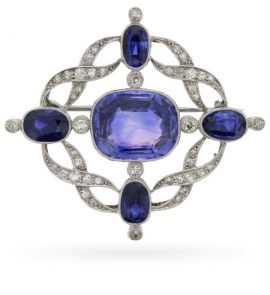
Kashmir sapphires are practically a legend. They were first discovered in a remote region of India in the late 1800s. These sapphires are extremely sought after because they’re generally of exceptional quality, the ‘bluest of blue’, almost velvety and adding to their mystique, the sapphire mines of Kashmir were exhausted in the 1920s. Since no new Kashmir sapphires have been mined in nearly 100 years, these rare stones can cost in excess of ten times more than a comparable stone from a less desirable mine.
While Kashmir sapphires are undeniably among the most beautiful gemstones in the world, sapphires from Madagascar or even Sri Lanka can look quite similar to Kashmir sapphires. Even side by side it can be very difficult to tell the difference. Many ‘Kashmir’ sapphires are thought to be wrongly graded stones from one of these two less desirable regions.
Blue Burmese sapphires have long been highly-prized by collectors because of their vivid royal blue colour and large size. Many people believe that any sapphire of Burmese origin is automatically superior to stones from other regions. This is not always the case, although a top-quality Burmese sapphire will usually attract a 50% – 100% premium over a similar stone from another region.
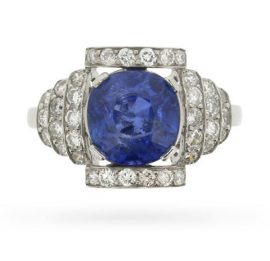
Appearance more than any other factor determines a stone’s quality and price. And although gemologists have several ways to determine a stone’s origin, it’s not an exact science because most sapphires have internal characteristics that are inherent in stones from several mining locations.
Colour
Colour is the most important driver of a sapphire’s value. While most people who are considering buying sapphire jewellery think of sapphires as blue stones, they also come in a range of fancy colours such as purple, green, orange, pink, yellow, white and everything in between. Some very rare sapphires even change colours in different lighting conditions! When a secondary colour (other than blue) accounts for more than 15% of a sapphire’s colour, it’s classified as ‘fancy coloured’.
Blue sapphires can range in hue from pure blue to slight green, strong green, slight purple or strong purple. The closer the sapphire’s hue is to a ‘true blue’, the higher its value. The bluest of blue sapphires are often referred to as ‘cornflower blue’ and they command a premium price.
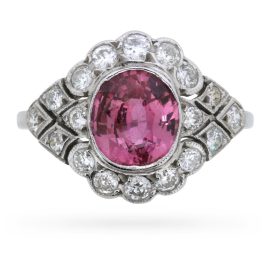
The most prized sapphires have a strong to vivid colour saturation and a medium to dark tone. Sapphires having a lighter tone and less saturation will appear diluted and therefore appear less striking.
Unlike diamonds, sapphires don’t have a standardised colour grading scale, so their beauty truly is in the eye of the beholder.
Clarity
Internally flawless sapphires are virtually unheard of and clarity grading standards for sapphires are much more forgiving than those used for diamonds. While diamonds are inspected under 10x magnification, sapphires are evaluated based on whether or not they’re ‘clean’ to the naked eye.
Certain types of inclusions are highly desirable. For example, the ‘silk inclusions’ which diffuse light and give Kashmir sapphires their characteristic velvety look can actually increase the value of a stone. And ‘rutile inclusions’ are responsible for the distinctive appearance of star sapphires.
Cut
Again, unlike diamonds, there are no cutting standards for sapphires. A skilled cutter will maximise a sapphire’s beauty by cutting it in a way that enhances its colour, clarity and brilliance. They might cut a light stone deeper in order to make it more intense in tone and cut a dark stone less deeply in order to lighten it. A well-cut sapphire will be symmetrical and reflect light at angles that enhance its beauty.
Sapphires come in many shapes, but the most common shapes are cabochon, cushion, emerald, oval and round.
Carat weight
The larger the sapphire the bigger the price tag! When buying sapphire jewellery, keep in mind that sapphires are heavier than diamonds, so a one carat sapphire will appear smaller than a diamond of the same weight.
Can sapphires be independently certified like diamonds?
While the criteria for choosing a sapphire is based primarily on the stone’s beauty and is less technical than buying a diamond, some buyers still prefer to buy a stone that’s been independently certified.
An independent certification for a coloured gemstone generally records the characteristics of the stone (i.e. weight, measurements, shape, and general colour), whether it’s natural or synthetic and treated or untreated. If possible, it might also include an opinion on the geographic origin of the stone.
The Gubelin Gem Lab in Switzerland is considered to be the premier coloured gemstone laboratory in Europe. Other organisations offering certification of sapphires include the Gemological Certification Services (GCS), Gem & Pearl Laboratory, Gemological Institute of America (GIA), and Swiss Gemological Institute (SSEF).
Historical use of sapphires in jewellery
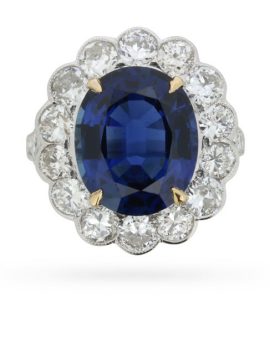
Sapphires have been used in jewellery since the days of the ancient Romans. At various points in history sapphires were believed to protect people against evil. In the Middle Ages, some European cultures believed that sapphires cured eye diseases and preserved chastity. And sapphires have long been symbols of nobility and faithfulness.
Kings often wore sapphires to protect them from their enemies in medieval times. This is believed to have started the longstanding association between sapphires and royalty, and it’s speculated that the colour name ‘royal blue’ originated during this period.
This royal tradition of wearing sapphires continued in 1796 when the French Emperor Napoleon Bonaparte gave Josephine an engagement ring that was set with a pear-shaped sapphire and a pear-shaped diamond. And the most famous sapphire in the world today is the one that was given by Prince Charles to Lady Diana Spencer in 1981, and from Prince William to Kate Middleton in 2010.
Fortunately, sapphires aren’t just for royalty. Before diamonds took over in the 1900s, sapphires were the gemstone of choice for engagement rings. Victorian era engagement rings often featured a combination of sapphires and diamonds.

With so many antique and vintage pieces and so many ‘flavours’ of sapphires to choose from, there’s sure to be one to suit almost everyone’s taste and budget. We invite you to browse the many sapphire pieces in our online shop, or better yet, come in and see us in Hatton Garden.
Simply stated… when buying sapphire jewellery, choose the sapphire that you find the most beautiful!







